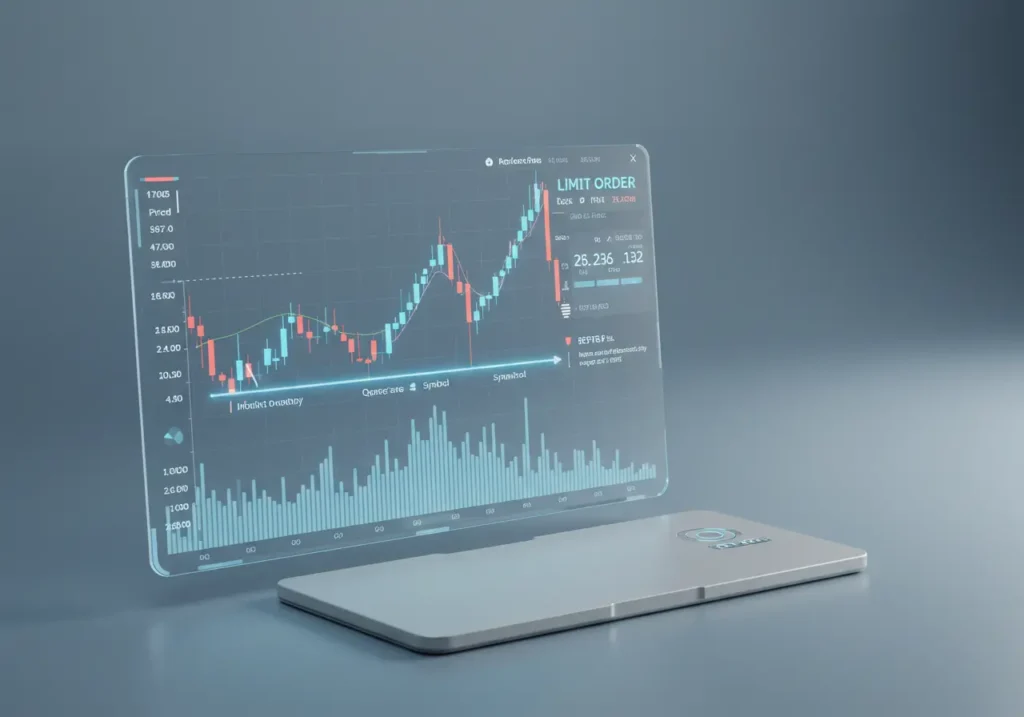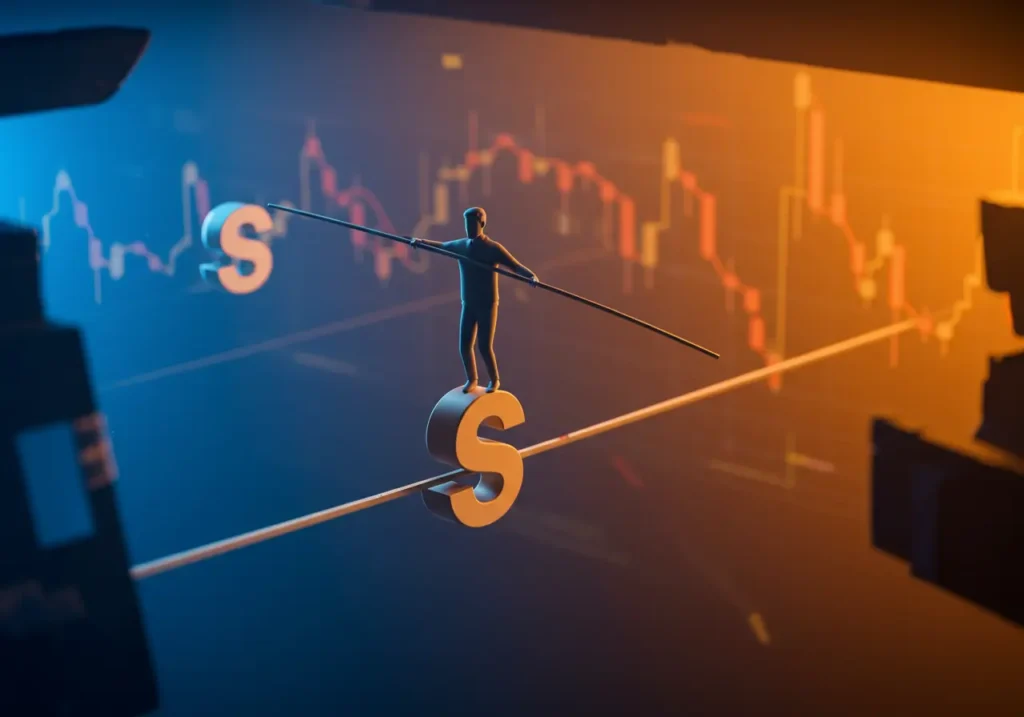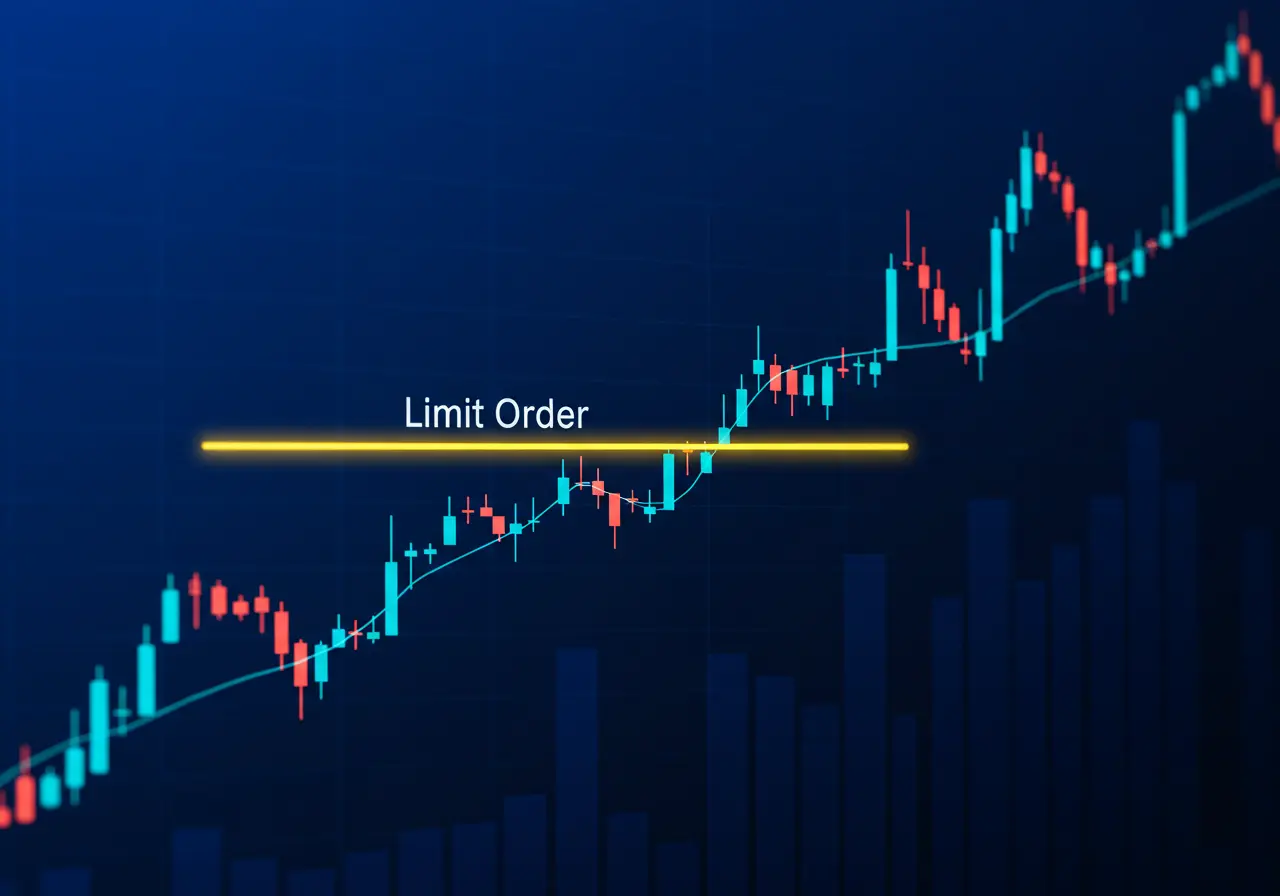How to Trade Crypto Using Limit Orders
Opening: a short, honest moment
It can feel scary to press “buy” or “sell” when the market moves fast. Maybe you’ve watched prices jump up, then crash down, and your stomach flipped. That gut feeling is normal. Many people want a safer way to trade — a way that gives them control instead of leaving everything to chance.
Trade Crypto with calm. In the paragraphs that follow I’ll explain how Limit Orders for Crypto Trading work, why they can help you Safely Trade Cryptocurrency, and practical steps to use them confidently. You’ll get clear examples, simple rules, and a gentle plan to protect your money.
What is a limit order?

A limit order is an instruction you give to your exchange. You say: “Buy this coin only if the price hits X” or “Sell only if the price reaches Y.” It won’t execute unless the market meets your target.
How a limit order differs from a market order
- A market order buys or sells immediately at the best available price. Fast, but price can slip.
- A limit order waits until the price you set shows up. Slower, but you control the price.
Limit orders are useful when you want to Avoid Market Volatility and Minimize Losses in Trading. They let you set rules that do the emotional work for you.
Why use limit orders?
Limit orders give you control. They help you plan ahead and cut down on panic trading. Here are real benefits:
Benefits of Using Limit Orders
- Price control: You choose the price. No surprises.
- Risk management: They help you Minimize Losses in Trading by setting clear exit points.
- Discipline: They enforce a trading plan without drama.
- Cost savings: Limit orders can get you better fills than market orders in thin markets.
- Time-saving: You don’t have to watch the screen all day.
When people ask how to Safely Trade Cryptocurrency, limit orders are one of the first tools to mention.
Basic types of limit orders and how they behave
There are a few variants to know. Exchanges use slightly different names, but the idea is the same.
Simple limit order
Place a buy or sell limit at a price you set. Wait until that price appears.
Example: BTC is $110,000. You place a buy limit at $105,000. If BTC drops to $105,000, your order executes.
Stop-limit order
This mixes stop orders and limit orders. You set a stop price that turns your order on, and a limit price for the trade.
Example: You hold ETH at $4,500 and want to limit losses. You place a stop-limit with stop at $4,200 and limit at $4,180. If price falls to $4,200, your limit order becomes active to sell at $4,180 or better.
Post-only and Fill-or-Kill
- Post-only makes sure your limit order sits on the order book and doesn’t take liquidity. Good for fee savings on some exchanges.
- Fill-or-Kill cancels the order if it cannot be fully filled immediately.
These options help with Secure Trading Strategies for Cryptocurrency when you care about fees or immediate fills.
How to set price targets effectively
Choosing a price is part art, part math. Keep it simple and use these steps.
1. Decide your goal
- Are you aiming for quick gains or long-term hold?
- Is this a test trade or a core position?
2. Use support and resistance
Look at recent price action. Support is a price level where buyers tend to show up. Resistance is where sellers appear. Set buys near support and sells near resistance.
3. Factor in fees and slippage
Some exchanges charge fees that affect your net price. If fees are high, set your limits slightly inside your ideal price to account for costs.
4. Break the order into chunks
Instead of one big limit order, try several smaller ones at nearby prices. This can help you Ensure Profit Maximization and reduce the risk of missing a move.
5. Use simple math for targets
Set a realistic profit target and a stop. For example:
- Target: +6%
- Stop: -3%
That ratio helps tilt the odds in your favor.
These steps are core Best Practices for Crypto Traders. They keep things tidy and sensible.
Risk management with limit orders

Limit orders do not remove risk. They help you manage it.
Keep position size small
Don’t bet too much on a single trade. Use a fixed percentage of your portfolio per trade — many traders use 1–3%.
Use stop-limits correctly
A stop-limit can fail if price gaps past your limit. Consider using a market stop in fast markets if you need guaranteed exit. That said, market stops can give worse prices. Balance safety and certainty.
Track open orders
Forgotten orders can be dangerous. If the market flips, old limit orders can execute at an unexpected time. Review and cancel any orders that no longer match your plan.
Keep emotions out
Limit orders help remove emotion. That’s their real power. When you place limits, you follow the plan rather than chase fear or FOMO.
Practical examples — simple and safe
Let’s run two short examples. Plain language. No fuss.
Example 1: Buying the dip
- You want to buy a coin at a lower price.
- Current price: $50. Set buy limit at $45.
- If price dips to $45, your order fills. If not, you keep your funds and sleep easy.
This is about Avoiding Market Volatility and Setting Price Targets Effectively.
Example 2: Protecting gains
- You bought at $40 and the price is $60.
- You set a sell limit at $66 (target) and a stop-limit with stop $56, limit $55 (safety net).
- If price drops to $56, your sell order aims to exit near $55, limiting further loss.
You secure gains and control downside. This is Ensuring Profit Maximization while Minimizing Losses in Trading.
Tools and settings to check on your exchange
Every exchange has settings. Learn them. They matter.
Look for these features
- Limit, stop-limit, and OCO (one-cancels-the-other).
- Fee structures and maker/taker differences.
- Order duration: GTC (good-til-canceled) vs. IOC (immediate or cancel).
- Post-only and Fill-or-Kill options.
Test with small amounts
Before risking a lot, place small limit orders. See how fills happen and how the exchange behaves. This builds trust in your setup.
How limit orders fit in a broader strategy
They are not the whole system, but they are a powerful tool.
Combine with research
Use charts, news, and basic on-chain signals. Limit orders enforce the plan you create from that research.
Combine with portfolio rules
Decide how much of your portfolio is active trading versus long-term holdings. Limit orders help you manage the active slice.
Combine with regular reviews
Check your trades weekly or monthly. Learn what worked and what did not. Tweak targets, sizes, and rules.
Common mistakes and how to avoid them
These are easy traps. Avoid them.
Mistake: setting unrealistic targets
If you set prices far from market reality, your orders may never fill. Be realistic with support/resistance.
Mistake: forgetting open orders
Old orders can execute at the wrong time. Make it a habit to check and cancel when needed.
Mistake: not accounting for fees
Fees bite profits. Factor them into your target and stop decisions.
Mistake: overcomplicating orders
Too many conditional orders can create confusion. Keep things simple until you gain experience.
A simple checklist before you place a limit order
- Know your goal (buy, sell, protect).
- Set size (percent of portfolio).
- Pick realistic price targets.
- Factor in fees.
- Choose order duration.
- Double-check and place the order.
- Monitor and adjust as needed.
This checklist puts structure around emotion. It helps you Safely Trade Cryptocurrency without drama.
Conclusion — a small promise to yourself
Trading does not need to be dramatic. A limit order is a quiet promise: set a price, stick to your rules, and walk away. Over time, small acts of discipline add up. You won’t win every trade. Nobody does. But with Limit Orders for Crypto Trading, you can trade smarter, protect your hard-earned money, and sleep better.
If you keep the rules simple — set thoughtful price targets, manage position sizes, and use limit and stop-limit orders wisely — you’ll be trading with a safety-first mindset. That’s exactly what many good traders do. It’s not flashy, but it works.
Quick recap
- Limit Orders for Crypto Trading let you set the price for buys and sells.
- Use stop-limit orders to protect positions but understand gaps can occur.
- Always account for fees and order types on your exchange.
- Break large orders into smaller chunks to reduce slippage.
- Keep position sizes small (1–3% per trade is common).
- Check and cancel outdated orders often.
- Combine limit orders with clear targets and stops to Minimize Losses in Trading and Ensure Profit Maximization.
- Use lightweight charts to set Price Targets Effectively.
- Practice with small amounts before scaling up.
- Limit orders are a core part of Secure Trading Strategies for Cryptocurrency.

Hello, I’m Edmilson Dias, founder of CoinBringer. I created this platform to guide people through the fast-moving world of cryptocurrency with clarity and safety. With years of research in blockchain and digital security, my goal is to translate complex topics into practical knowledge, offering reliable tutorials, safety insights, and guidance for both newcomers and experienced users.
Discover more from CoinBringer
Subscribe to get the latest posts sent to your email.







